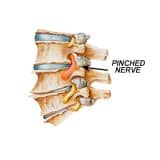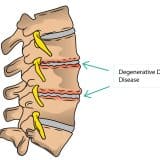Fusionless Spine Surgery

In recent years, various advancements in the medical sector have revolutionized spine surgery. One such innovative change is fusionless spine surgery, a less invasive method offering hope to millions of individuals suffering from spinal problems. It is used to treat spine issues such as scoliosis, herniated discs, spondylolisthesis, and several others.
What is fusionless spine surgery?
Fusionless spine surgery is the latest medical process designed to treat various spinal disorders without the requirement of spinal fusion. In the traditional method of spinal fusion surgery, the vertebrae are joined to stabilize the spine, which often results in reduced mobility and several complications. But with the innovative method of fusionless spine surgery, the natural movement of the spine remains unaffected and the primary issue is also resolved. Fusionless spinal surgery utilizes the latest technologies and methods, such as flexible implants, to correct spinal problems without requiring vertebrae fusion.
Benefits of Fusionless Spine Surgery
By preferring fusionless spine surgery over traditional spine surgery, patients benefit in several ways. Here are a few of them:
Preserves Mobility
As discussed before, one of the significant benefits of fusionless spine surgery is that spinal mobility is not affected in contrast to fusion surgery, where mobility is restricted in fusion segments. In the fusion technique, the patient can maintain a wide range of movements, leading a better quality of life.
Less Recovery Time
In fusion spinal surgery, a patient has to go though prolonged recovery, during which they suffer various discomforts and limited day-to-day activities. With fusionless spine surgery, the recovery time is short, allowing patients to return to their daily routine quicker.
Minimum Invasion
Fusionless spine surgery involves small incisions and decreased tissue damage. This not only assists in reducing the infection but also encourages fast healing.
Less risk of complications
Fusion spine surgery has high complication risks, such as pseudo arthrosis, scoliotic deformity and other such issues. However, the fusionless method, which involves minimum invasion, does not increase the risk of complications. This leads to minimal requirement for rehabilitation or therapies, thereby reducing the cost of healthcare and allowing early return to everyday life.
Suitable for a young patient
For young patients with a very active lifestyle, fusionless spine surgery is a good option. It helps them maintain flexibility in the spine and continue participating in varied physical activities such as exercising, running, walking etc.
Avoiding adjacent segment degeneration
Spinal fusion surgery often results in enhanced stress on nearby spine segments, which causes degeneration and the requirement of repeating surgery. But with fusionless spine surgery, this risk is less as the stress on different spine segments is minimal. In the case of extra procedures, fusionless procedures give more flexibility, and the spine is easily accessible for all adjustments wherever necessary.
Conclusion
Even if fusionless spine surgery provides several benefits, it is unsuitable for all patients. It is essential to consult a spine surgeon, who can help determine the most suitable treatment plan after assessing the specified condition.
With technology advancing, the future of spine surgery seems promising, and fusionless spine surgery is one such piece of evidence. These innovative methods not only enhance outcomes but also quality of life.
For enquiries and online appointments:
Email – naveen.st@gmail.com
Call/Whatsapp – +91 7676090119
Visit www.naveenspine.com to know more.




